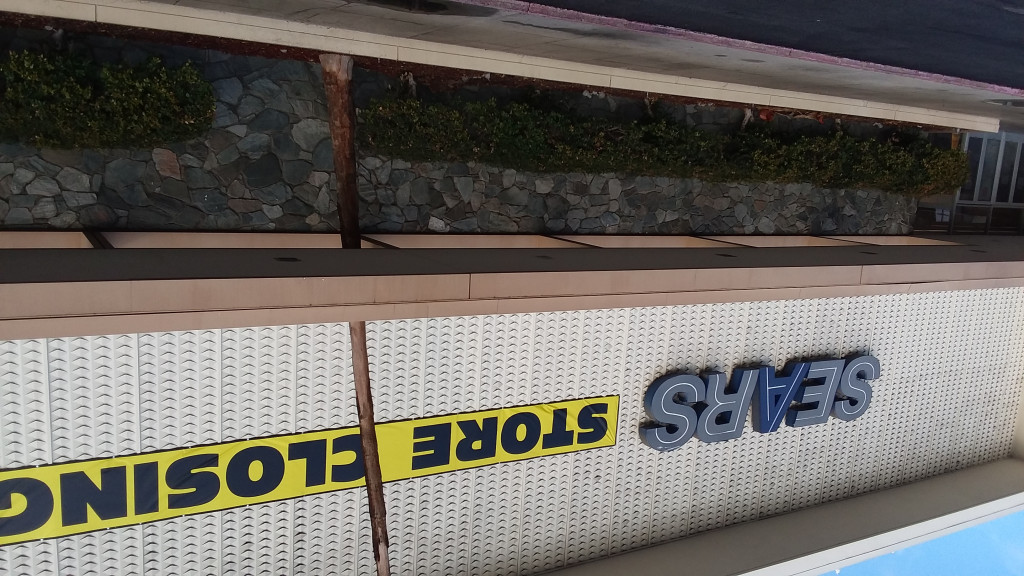Will a mall owner’s salvation be shopping for more malls?
Department store giant Macy’s announced Feb. 4 it’s closing 125 stores nationwide, the latest blow to the mall business. Owners of the shopping centers that house the likes of Macy’s are paying for the seemingly endless wave of store closings with a steep slashing of property values.
Let me name a few merchants shutting doors of late, in alphabetical order: Barneys, Bed Bath & Beyond, Bose, Charlotte Russe, Charming Charlie, Chico’s, Dressbarn, Forever 21, GameStop, Gap, J.C. Penney, Kmart, New York & Co., Papyrus, Payless ShoeSource, Party City, Pier 1 and Sears.
Those cuts add up to mall values plummeting 15% in a year through January, according to a price index by Green Street Advisors which follows publicly traded property owners.

It’s a stunning drop, especially for relatively good economic times. Malls are the only commercial real estate niche with falling prices among 11 groupings tracked by the Newport Beach firm.
Green Street’s overall commercial property index is up 2% in the past 12 months. Even strip malls, the small neighborhood shopping centers, eked out a 1% gain in a year.
Let’s be honest, mall devaluation is nothing new. A year-end industry report by Green Street showed values in the past three years were down anywhere from 29% for the top-shelf, high-end “A-plus-plus” malls to 41% for typical “A-minus” malls.
“The woes facing the mall industry are arguably still in the early innings,” Green Street writes.
Green Street soured so much on malls in October that it advised its clients to shy from investing in them.
Look at the world through a mall owner’s eyes. These landlords are so desperate that two big mall owners — Simon Property Group and Brookfield Brookfield Property Partners — offered to buy and run bankrupt the Forever 21 clothing chain.
Start with the shrinking number of consumers coming to these big shopping centers as more folks choose to either buy online or stay closer to home.
Less foot traffic translates to fewer sales. That’s put many merchants in or near bankruptcy. That also shuts stores and creates more vacancies to fill.
Empty spaces beget falling rents eked out from the surviving merchants. Less cash-flow then sours investors, especially in an industry where most mortgages require repayment.
Thus, we see some creativity at the mall. Seasonal, short-lived “pop-up shops” are one way mall owners have adapted. Bringing in discount outlet stores is another. Then there’s a trend to focus on restaurants and entertainment.
But such tweaks don’t seem to be enough. Especially when real estate investors are valuing malls at a steep discount despite a decent economy filling shoppers’ checkbooks.
So with mall values by Green Street’s math at seven-year lows, the result is what a retailer would call “sale” pricing. And such investment “bargains” translate to Green Street now suggesting the next big move at the mall may be industry consolidation.
Yes, the takeover game would mean mall owners are less interested in who’s shopping at their stores and more interested in buying up each other.
Now mergers do provide the hope of finding “synergies” (ahem, cost cuts) in the resulting larger entity. Already there’s a rumor that mall giant Simon is talking with smaller rival Taubman Centers about a combination.
In the takeover game, the sellers will do well. Or at least get a graceful exit from their mall challenges.
And I’ll guess that buyers may not just be other mall owners. As you know, cheap real estate is hard to find these days and shopping may not be the next best use of many acquired malls.
The urge to merge is so great that Green Street on Feb. 4 decided to switch signals and once again recommend owning shares of some mall owners.
But owning a mall is still a tough business no matter who survives a possible outbreak of merger mania. Green Street writes, “the bearish fundamental outlook for malls is unchanged, but the near-term performance of the sector now seems likely to be driven by” merger activity.










